Jewelry Collection
Showing 1–12 of 919 resultsSorted by latest
- CHOOSE A PRICE RANGE
- Categories
- Unique Rings
- Earrings
- Necklaces
- Pendants & Charms
- Bracelets
- Designer Jewelry
- Vintage Brooch & Pins
- Gifts & Occasions
Expand CategoriesCondense Categories - Product collections
- Christmas in July Sale
- Stocking Stuffers
- Alternative Engagement Rings
- Art Deco Jewelry (1920s-1930s)
- Art Nouveau Jewelry (1890-1910)
- Birthstone Jewelry
- Edwardian Jewelry (1901 to 1915)
- Estate & Vintage Jewelry
- Georgian Jewelry
- Gemstone Jewelry
- Florida Fishing Jewelry
- Family Jewelry
- Retro Jewelry (1930s-1950s)
- Victorian Jewelry (1837-1901)
- GIA Certified Jewelry
- GIA Diamond Engagement Rings
- Tungsten Rings
Expand Collections Condense Collections
Filter By:
- Gemstone Type
- No Gemstone
- Agate
- Alexandrite
- Amethyst
- Aquamarine
- Carnelian
- Chrysoprase
- Citrine
- Coral
- Diamond
- Diamond | Black
- Diamond | Brown
- Diamond | Yellow
- Emerald
- Garnet
- Iolite
- Jade
- Lapis Lazuli
- Moonstone
- Morganite
- Onyx
- Opal
- Pearl
- Peridot
- Quartz
- Ruby
- Sapphire
- Spinel
- Star Sapphire
- Tanzanite
- Topaz
- Tourmaline
- Tsavorite
- Turquoise
- Zircon
Expand FiltersCondense Filters - Diamond Carat Size
- Metal TypeExpand FiltersCondense Filters
- Stone Cut
- Asscher
- Baguette
- Cabochon
- Cameo
- Cushion
- Emerald
- French
- Heart
- Marquise
- Old European
- Old Mine Cut
- Oval
- Pear
- Princess
- Radiant
- Rose
- Round
- Sugarloaf
- Trillion
- Fancy
- Single
- Square
- Transitional
- Trapezoid
Expand FiltersCondense Filters - Jewelry Era & Styles
- 21st Century
- Art Deco
- Art Nouveau
- Baroque
- Cameo
- Edwardian
- Etruscan Revival
- Georgian
- Late 20th Century
- Mid-Century
- Modernist
- OOAK One-of-a-Kind
- Retro
- Revival
- Victorian
- Victorian Revival
Expand FiltersCondense Filters - Color
- Black
- Blue
- Brown
- Champagne
- Clear
- Colorless
- Coral
- Cream
- Gold
- Gray
- Green
- Multi Colored
- Orange
- Pink
- Purple
- Rainbow
- Red
- Rose Gold
- Silver
- Turquoise
- White
- Yellow
Expand FiltersCondense Filters - Ring SizeExpand FiltersCondense Filters
- Coin CertificationExpand FiltersCondense Filters
-
NEW
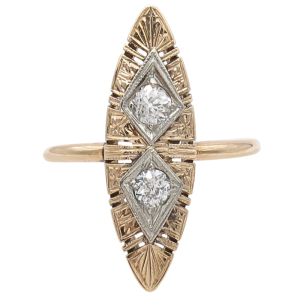
.30ctw Old Euro Diamond Navette Art Deco Ring 14K
$1,300.00Add to cart -
NEW
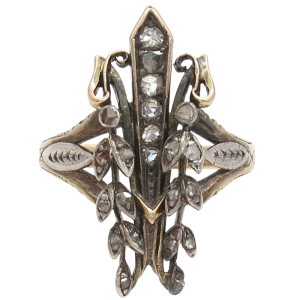
Rose Cut Diamond Wreath Georgian Ring 14K & Silver
$1,200.00Add to cart -
NEW
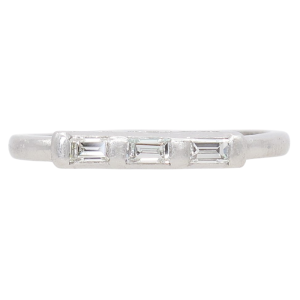
.18ctw Diamond Baguette Art Deco Band Platinum
$995.00Add to cart -
NEW
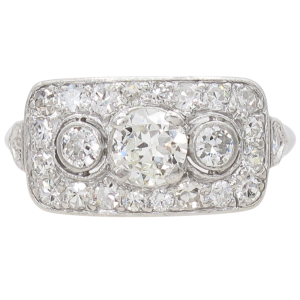
1.21ctw Three-Stone Diamond Art Deco Ring Platinum
$2,200.00Add to cart -
NEW
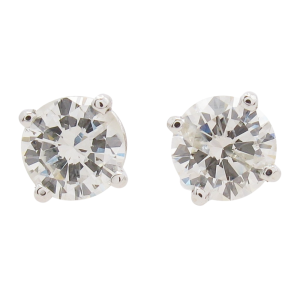
0.89ctw Round Solitaire Diamond Stud Earrings White Gold
$1,115.00Add to cart -
NEW
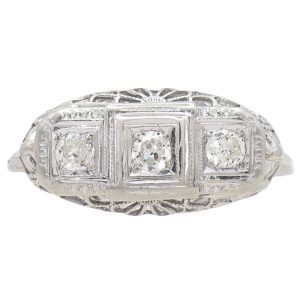
.24ctw Three Stone Diamond Filigree Art Deco Ring Platinum
$600.00Add to cart -
NEW
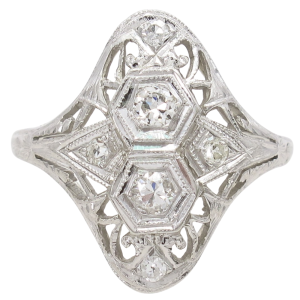
.22ctw Diamond Filigree Detail Art Deco Ring 18K
$579.00Add to cart -
NEW
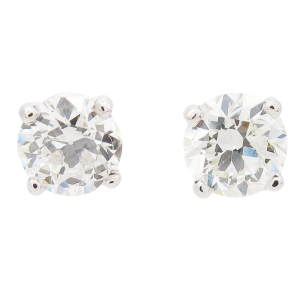
1.15ctw Round Solitaire Diamond Stud Earrings White Gold
$2,300.00Add to cart -
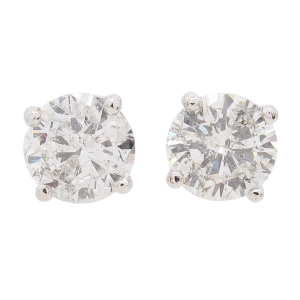
1.33ctw Round Brilliant Solitaire Diamond Stud Earrings White Gold
$2,000.00Add to cart -
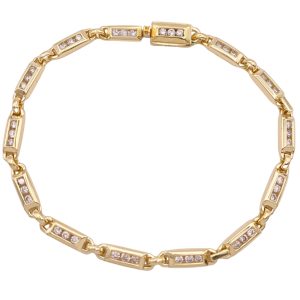
1.92ctw Channel Set Diamond Channel Set Bracelet 14K Gold
$1,775.00Add to cart -
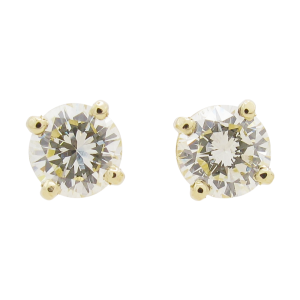
.80ctw Round Brilliant Solitaire Diamond Stud Earrings Yellow Gold
$875.00Add to cart -
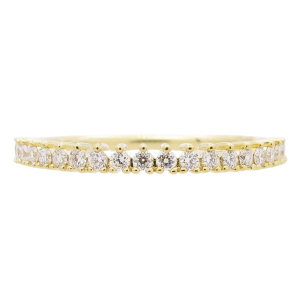
.19ctw Diamond Three Prong Delicate Band 14k Yellow or White Gold
$925.00Select options This product has multiple variants. The options may be chosen on the product page
Jewelry Store - Arnold Jewelers
Discover Timeless Elegance with Vintage & Antique Jewelry at Arnold Jewelers | Your Trusted Jewelry Store near Tampa
Unearth the captivating allure of bygone eras with Arnold Jewelers’ exquisite collection of vintage and antique jewelry. More than just adornments, our pieces tell stories, reflecting the artistry and craftsmanship of generations past.
If you’re searching for unique, heirloom-quality treasures, you’ve found the perfect destination. While our physical store is conveniently located in Largo, we are a premier jewelry store serving the broader Tampa Bay area, offering a curated selection that stands apart.
At Arnold Jewelers, we understand the enduring appeal of vintage jewelry. Each piece is carefully selected for its authenticity, beauty, and historical significance.
Our inventory showcases a diverse range of styles and periods, from delicate Art Deco necklaces to ornate Victorian brooches. For those seeking the ultimate in refined elegance, our antique jewelry collection features rare and exceptional pieces that are sure to captivate.
Shop Era Jewelry:
Why Choose Arnold Jewelers for Your Vintage & Antique Jewelry Needs?
- Extensive Vintage & Antique Selection: Explore a breathtaking array of gold rings, necklaces, earrings, bracelets, and more, spanning various eras and styles.
- Expertly Curated Collection: We pride ourselves on offering authentic, high-quality vintage and antique jewelry.
- Knowledgeable Staff: Our passionate team possesses deep expertise in historical jewelry, guiding you to find the perfect piece.
- Competitive Wholesale Pricing: Enjoy exceptional value on our entire collection.
- Serving the Tampa Bay Area: While based in Largo, we are a respected jewelry store for customers throughout the Tampa region.
- Custom Jewelry Options: If you desire a unique piece inspired by vintage designs, we also offer custom jewelry services.
Whether you’re a seasoned collector or a first-time buyer, Arnold Jewelers invites you to experience the magic of vintage and antique jewelry. Visit our Largo store, easily accessible from Tampa, and let us help you find a treasure that will be cherished for years to come.
Stop by Arnold Jewelers in Largo today or Shop our online jewelry selection and discover your new favorite piece!
